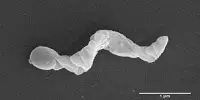Sensitometry is the scientific study of light-sensitive materials, particularly photographic film. It is a branch of photography and imaging science that deals with the measurement and characterization of the sensitivity of photosensitive materials such as photographic films and papers. The goal of sensitometry is to understand and quantify how these materials respond to light, particularly in terms of their ability to record different levels of exposure.
They investigated how the density of silver produced varied with the amount of light received, as well as the method and time of development. The study was inspired by the work of Ferdinand Hurter and Vero Charles Driffield (circa 1876) with early black-and-white emulsions.
Key concepts and terms associated with sensitometry include:
- Characteristic Curve: The characteristic curve, also known as the H&D curve (Hurvich and Driffield curve), represents the relationship between the exposure (amount of light) and the density (darkness) of the developed image on a photosensitive material. It aids in describing the material’s overall sensitivity and tonal range.
- Speed (ISO, ASA, DIN): Sensitometry is concerned with a photosensitive material’s speed, which is a measure of its light sensitivity. Different scales, such as ISO (International Organization for Standardization), ASA (American Standards Association), or DIN (Deutsches Institut für Normung), are frequently used to express speed.
- Gamma (γ): Gamma is a measure of a photosensitive material’s contrast. It shows how the density of the developed image changes in response to exposure changes. A higher gamma value indicates greater contrast.
- Exposure and Development: Sensitometry involves the study of how photosensitive materials respond to both exposure (the amount of light during the image-capturing process) and development (the chemical processing that follows exposure). This includes examining the effects of different development times and conditions.
- Fog and Base Density: Fog refers to the unwanted darkening of a photosensitive material even in the absence of exposure to light. Base density is the inherent darkness of the undeveloped material. Sensitometry helps in understanding and controlling these factors.
Importance
Sensitometry investigates the phenomenon of reciprocity failure, which occurs when the relationship between exposure and density deviates from expected behavior under prolonged or very short exposures.
Sensitometry is important in photography and other imaging applications because it provides a scientific foundation for understanding and optimizing the performance of photosensitive materials, allowing photographers and imaging professionals to achieve more precise results.
















